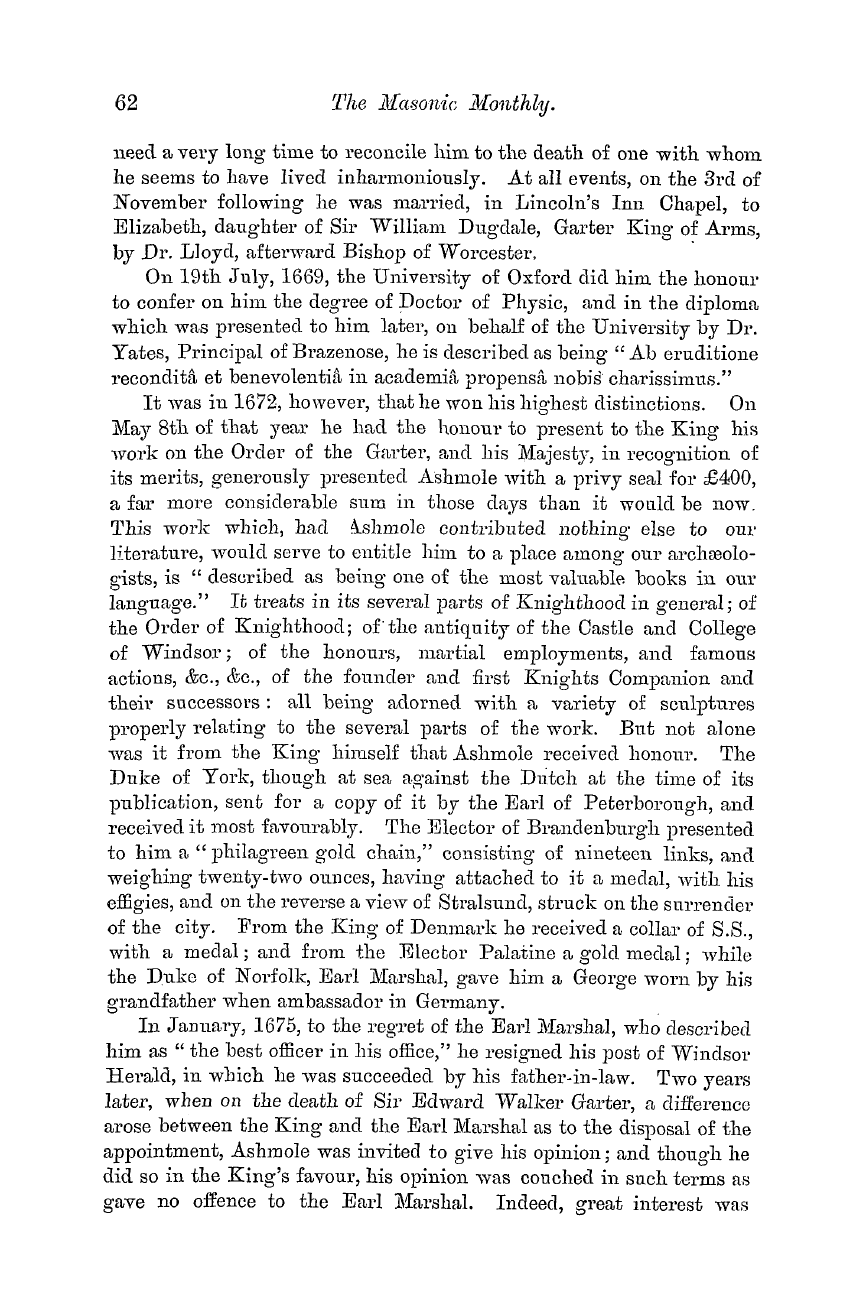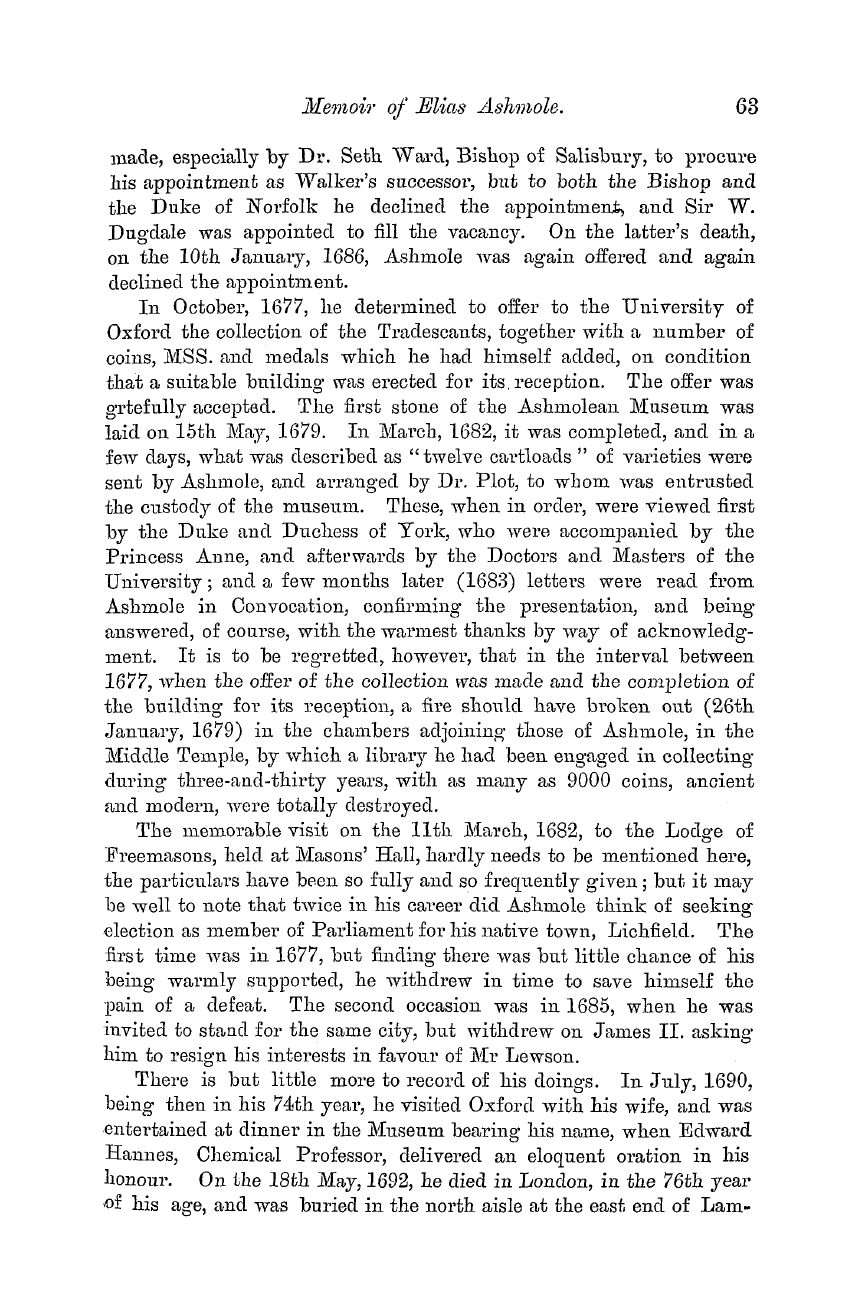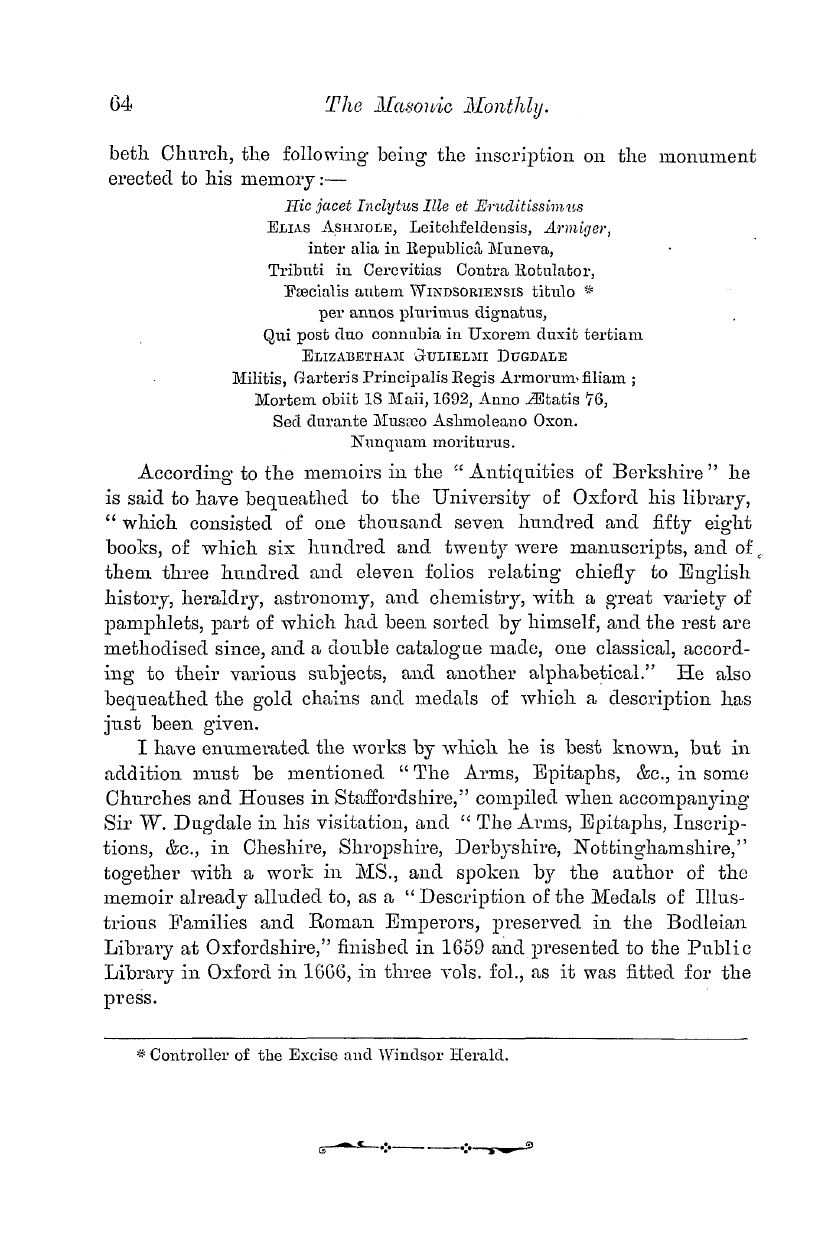-
Articles/Ads
Article EARLY HAUNTS OF FREEMASONRY. ← Page 4 of 4
Note: This text has been automatically extracted via Optical Character Recognition (OCR) software.
Early Haunts Of Freemasonry.
had set in years before , there were still living within the City boundaries men of good social standing as well as of opulence ; and streets and localities which seem to us dingy and uninviting , were , at the time we speak of , of much higher repute . Thus , though' it would not greatly impress the Londoner of to-day to be told that Masonic
lodges held their meetings at small taverns in such out of the way places as Ivy Lane , Whitechapel , & c , & c , yet here , again , we are under the necessity of repeating that allowance in such cases must be made for the difference between London as it was about 1720—and as it will be found described in Strype's edition of Stow ' s " Survey of
London" of that year—and London as it now is in 1882 . The Channel-row , Westminster , where the second surviving Time Immemorial Lodge met at this epoch , is the same with the Cannon-row of to-day , which is best known to our readers , perhaps , from the fact
of its containing the blocks of buildings which , in the days of the East India Company , was occupied officially by the President of the Board of Control and his staff of officers , and which now is set apart for the use of the Civil Service Commissioners . This was the aristocratic Lodge of those days , if we may be permitted
to use an epithet which has no proper place in a Masonic vocabulary , but which will serve to distinguish its members from those of the other three original Lodges in respect of their social standing . In addition to the Grand Masters Payne and Desaguliers , and Dr . Anderson , who were men of learning and repute in the sight of the
world , and who , moreover , may be held to have been the founders of the speculative system of Freemasonry , there were included among its members such persons of rank as Lord Paisley , the Duke of Queensborough , Sir Adolphus Oughton , Sir Robt . Rich , Sir Thomas Prendergast , Lord Carmichael , & c .
We have noted in outline some of the earliest haunts of Freemasonry . We have no inte ntion of troubling our readers with lists of the taverns and inns at which ihe original Lodges , and those waiTanted during the years immediately following 1717 , were in the habit of meeting—that would be the reverse of interesting ; but we hope in future
numbers to place before them particulars respecting the old associations , historical and social , which helong to those localities , in the hope that they will nndeisiand better the nature of the progress which Masonry made so rapidly after the establishment of our Grand Lodge .
Note: This text has been automatically extracted via Optical Character Recognition (OCR) software.
Early Haunts Of Freemasonry.
had set in years before , there were still living within the City boundaries men of good social standing as well as of opulence ; and streets and localities which seem to us dingy and uninviting , were , at the time we speak of , of much higher repute . Thus , though' it would not greatly impress the Londoner of to-day to be told that Masonic
lodges held their meetings at small taverns in such out of the way places as Ivy Lane , Whitechapel , & c , & c , yet here , again , we are under the necessity of repeating that allowance in such cases must be made for the difference between London as it was about 1720—and as it will be found described in Strype's edition of Stow ' s " Survey of
London" of that year—and London as it now is in 1882 . The Channel-row , Westminster , where the second surviving Time Immemorial Lodge met at this epoch , is the same with the Cannon-row of to-day , which is best known to our readers , perhaps , from the fact
of its containing the blocks of buildings which , in the days of the East India Company , was occupied officially by the President of the Board of Control and his staff of officers , and which now is set apart for the use of the Civil Service Commissioners . This was the aristocratic Lodge of those days , if we may be permitted
to use an epithet which has no proper place in a Masonic vocabulary , but which will serve to distinguish its members from those of the other three original Lodges in respect of their social standing . In addition to the Grand Masters Payne and Desaguliers , and Dr . Anderson , who were men of learning and repute in the sight of the
world , and who , moreover , may be held to have been the founders of the speculative system of Freemasonry , there were included among its members such persons of rank as Lord Paisley , the Duke of Queensborough , Sir Adolphus Oughton , Sir Robt . Rich , Sir Thomas Prendergast , Lord Carmichael , & c .
We have noted in outline some of the earliest haunts of Freemasonry . We have no inte ntion of troubling our readers with lists of the taverns and inns at which ihe original Lodges , and those waiTanted during the years immediately following 1717 , were in the habit of meeting—that would be the reverse of interesting ; but we hope in future
numbers to place before them particulars respecting the old associations , historical and social , which helong to those localities , in the hope that they will nndeisiand better the nature of the progress which Masonry made so rapidly after the establishment of our Grand Lodge .

































































